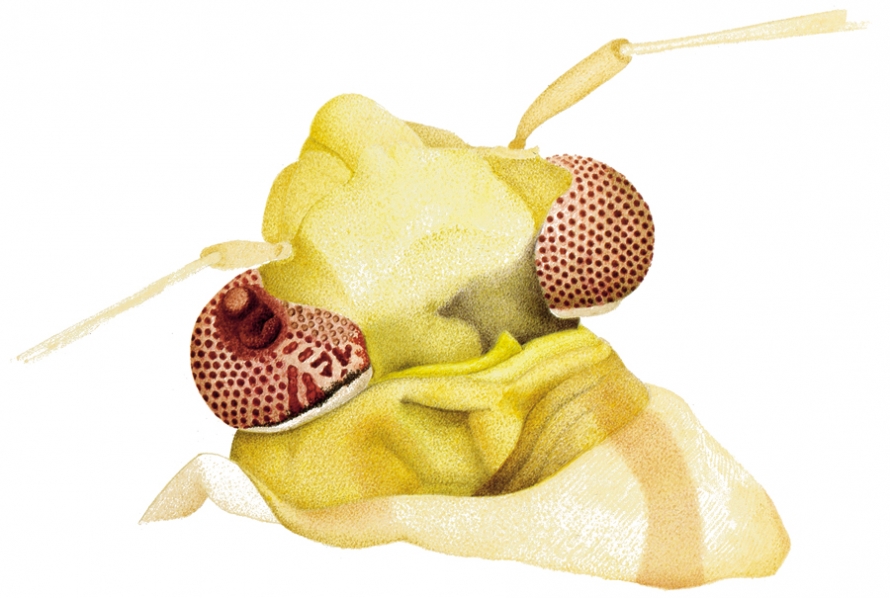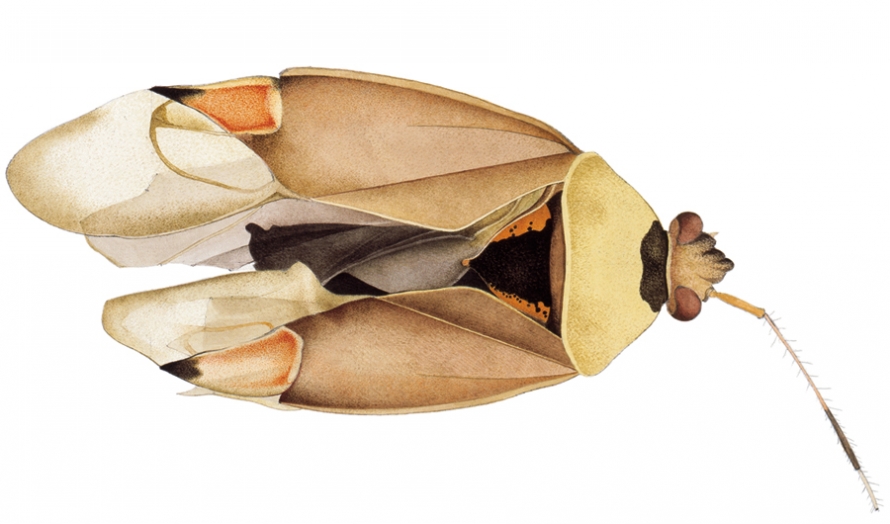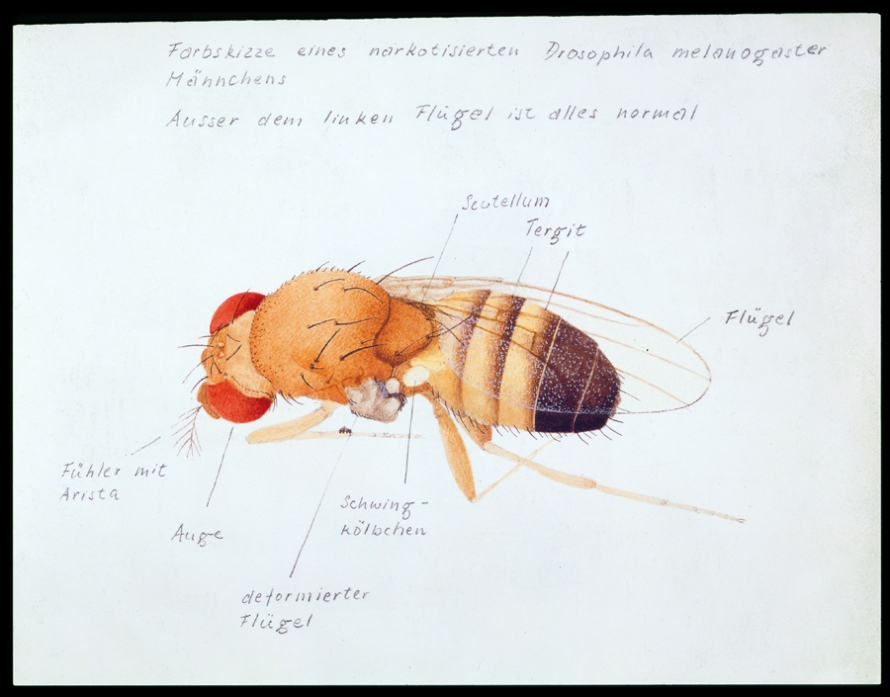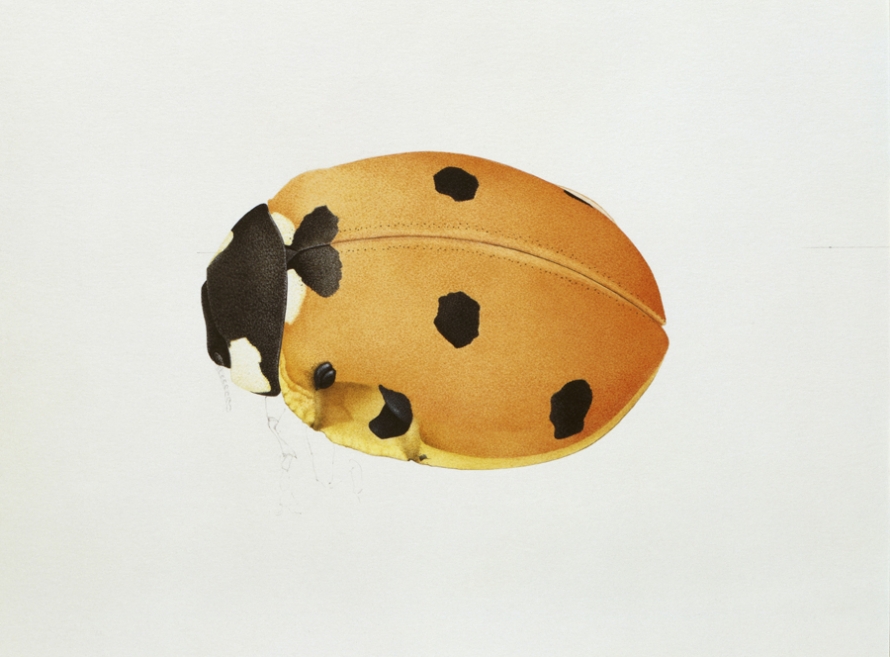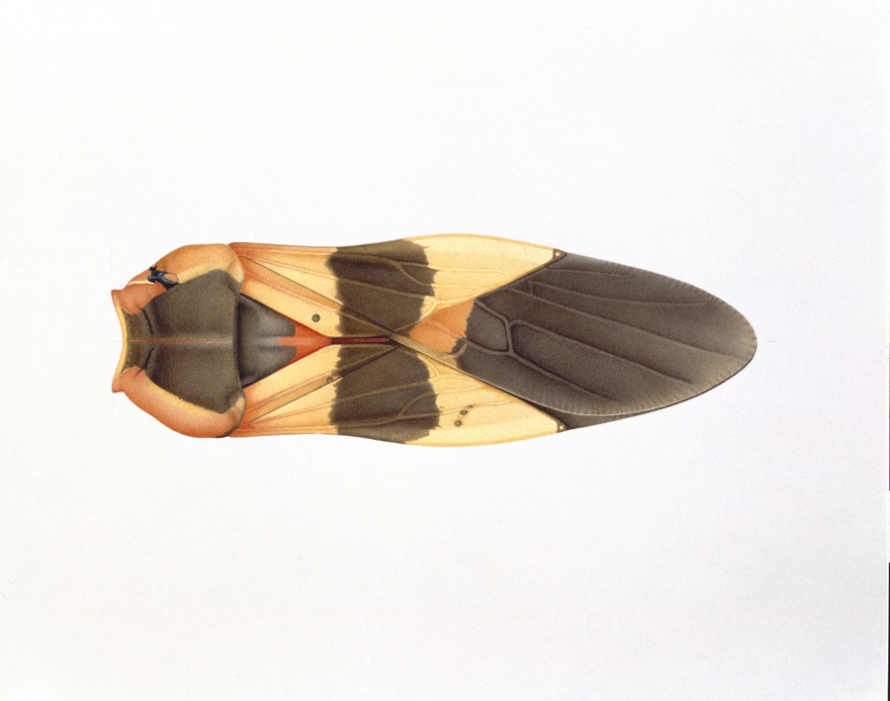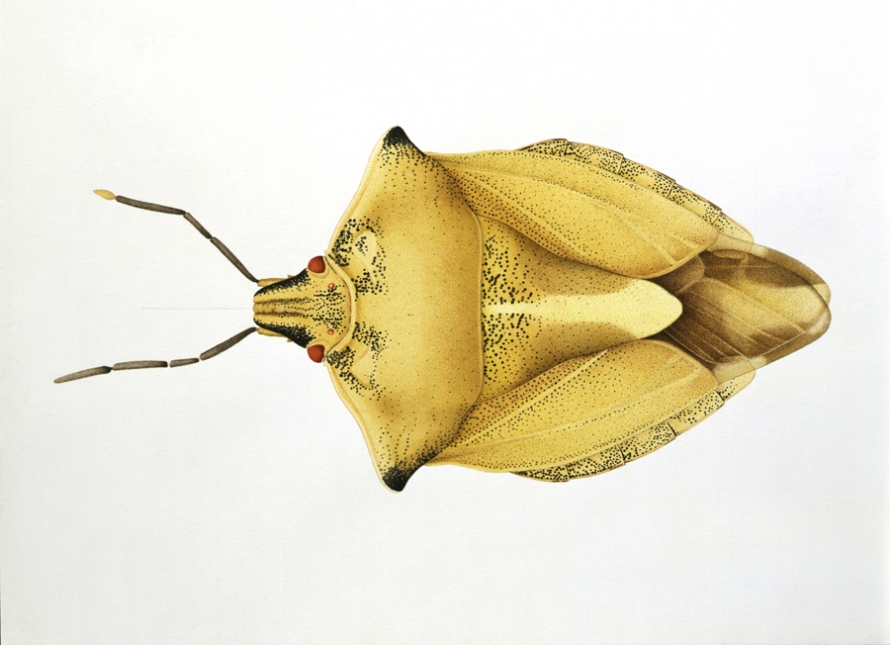Cornelia Hesse-Honegger is a scientific illustrator and artist known for her pioneering bug work: She has collected more than 16,000 insects near nuclear plants and fallout sites, searching for signs that they’ve been affected by low-level radiation. Her watercolors are beautiful, but also carry a frightening message; as Hesse-Honegger notes below, “we the humans dictate in the end how nature should look like.”
All images courtesy of the artist, copyright © Cornelia Hesse-Honegger, all rights reserved.
When did you begin to draw malformed insects? What was the inspiration?
I first drew and painted malformed flies, Drosophila subobscura, during my work as a scientific illustrator at the scientific department of the Zoological Museum at the University of Zürich in 1967. The flies were mutated by adding the “poison” EMS to their food. (Because the poison is similar to Agent Orange used in Vietnam, I went to South Vietnam in 2004 to collect true bugs from actual spray areas.) For work I only had to make drawings; the paintings that I made were of my own accord, and certainly had an impact on my future work—I knew from then on what it meant to look at a deformed insect. I also knew what humans were capable of doing to nature.
How many nuclear-related areas have you visited? How many insects have you collected?
In terms of locations, I’ve visited 25, from Chernobyl to Three Mile Island to Cape de la Hague. I have collected a total of 16,367 insects. I started in 1968 in Zürich but at that time I collected very few true bugs, only the ones I intended to paint.
An interesting thing about that time when I started to paint true bugs was that I painted only a part of one wing on the right or left side. Which means that I was interested in asymmetry at the time, which again was a good base for preparing myself in an unconscious or unknown way for what lay ahead of me with the painting of malformed bugs from the neighborhoods of nuclear installations.
I think the artist is a person who transforms questions not yet asked and makes a relevant contribution with a picture—makes the question become existential.
How would you describe your visit to Chernobyl?
In 1990, I had the chance to travel with a group of journalists and parliamentarians to Chernobyl. The visit to Polesskoje, 30 kilometers west of the exclusion zone, was impressive because it showed me what it means for people to be victims of such a disaster. We had a few doctors with us, and the mothers were gathering on the streets asking them to examine their children, as at the time they could not measure the radioactivity since they owned no apparatuses to measure the radioactivity. They weren’t sure whether they could let their children play in heavily radiated areas. We had some Geiger counters with us and could tell them only a basic idea of how high the radiation was. It was only later that Switzerland gave Polesskoje two apparatuses to measure the radioactivity. The town gave a very depressing impression. No one had any flowers growing. The streets were washed with water twice a day.
In Pripjat, we could stay only 10 minutes and I only collected a few true bugs. The quietness of the town, with only the music coming out of the loud speakers, was frightening. There were no birds, no insects. We saw only one butterfly, and plants had already started to overgrow the town. We looked into the windows where things were left behind—tables full of food, dolls, books.
The whole experience was for everybody very touching, very unnerving. We all knew that radioactivity made by man is one of the most evil and destructive inventions ever created.
Why did you choose art to document your findings?
I did not choose art to document my findings; it developed from my work as a scientific artist, to the point when I started painting more mutated flies in 1985.
I never thought really about myself as being an artist. I just made what I thought was necessary. I thought that these laboratory flies are the prototypes of our understanding of nature, in the sense that we can do anything to nature—we the humans dictate in the end how nature should look like. It was for me the prototype of a future nature, man-made.
The professor who first gave me the mutated flies was convinced, however, that the radiation from Chernobyl had no impact on nature. This is what brought up the question of “low-level radiation.” Nobody was interested in doing research; this is why I thought I had to make these paintings to show the scientists that it would be important to start research in fallout areas.
After I had collected true bugs in fallout areas in Sweden in the summer of 1987, I started with my research around nuclear power plants, mostly in Switzerland. It was only then, when I printed my findings in an important Swiss magazine, that a heavy discussion started about low-level radiation. This discussion still has not come to an end as the scientists stick to their beliefs in spite of lots of research and findings which show the contrary.
Many scientists and governments would argue that nuclear power is a (if not “the”) sustainable, environmentally-friendly energy source.
It is important to look at the whole cycle of nuclear energy. It starts with mining, where even in the U.S. many people get severely ill, or die. Even their offspring are sometimes very ill. Globally, the miners are often Africans, poor people who don’t count; people who we, the consumers of electricity, know nothing about or don’t care to ask. Then the fuel has to be enriched and transported. Together with the construction and demolition of the plants, that’s a lot of carbon dioxide being produced, which nobody likes to talk about, either.
Then there’s the radioactivity, which can contaminate an area. There were studies made in the U.S. as well as one in Germany (Kikk Studie) which show that children living near nuclear power plants get cancer more frequently. Switzerland started such a study a few weeks ago. Even though the numbers show a very high risk, the politicians and scientists try to negate that effect.
And what about depleted uranium ammunition, a product of nuclear energy and other nuclear weapons?
My opinion is, that anything that has to do with the manmade nuclear industry is not only dangerous but criminal. There are many people who earn a lot of money. There are many people who are afraid to voice a single phrase against the nuclear industry since it’s so powerful—and there are millions of people who suffer from these products. There has been so much lying going on, starting with Hiroshima and Nagasaki—when will we stop lying about the dangers? Who is going to stop this crazy development?
